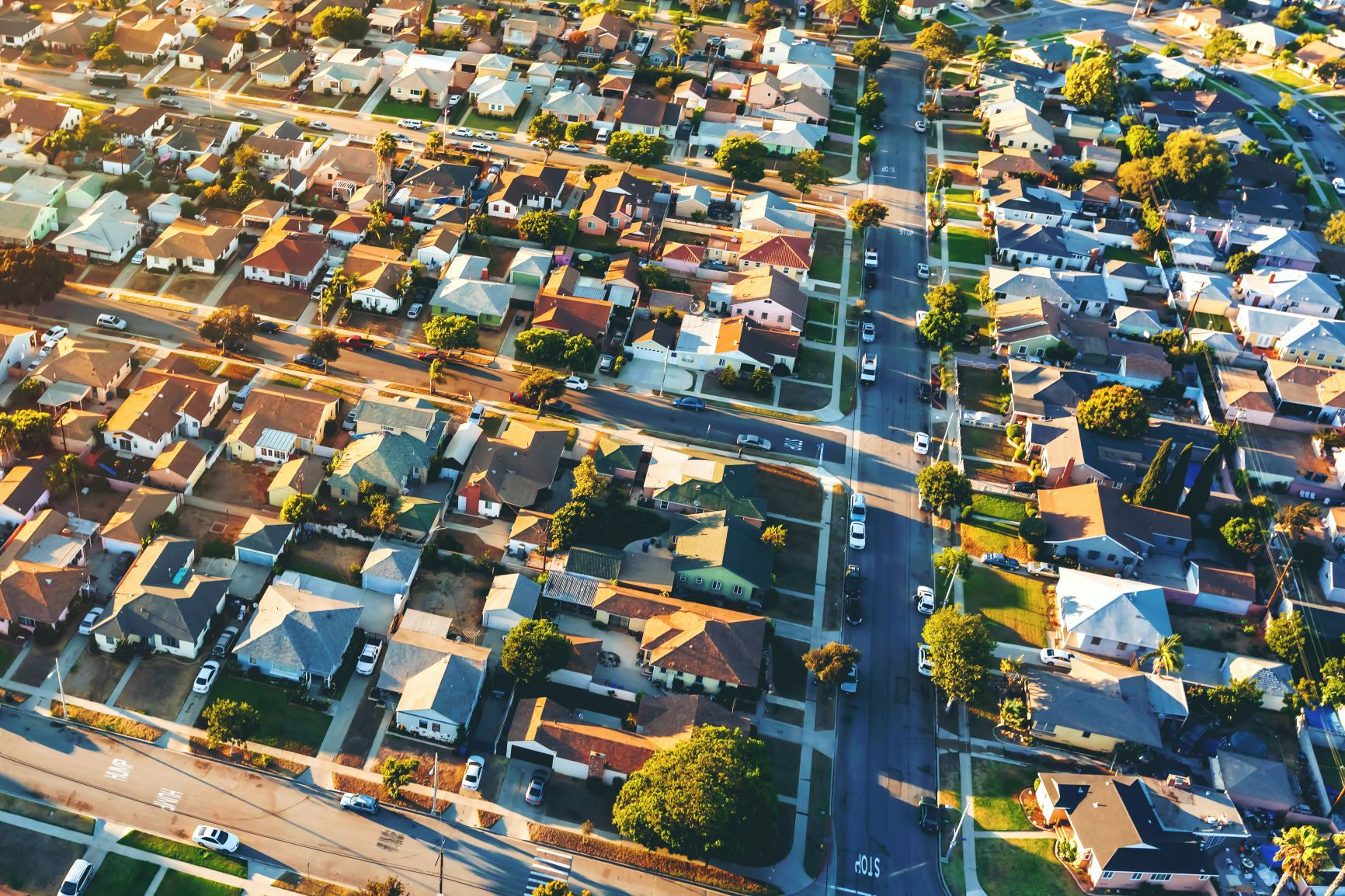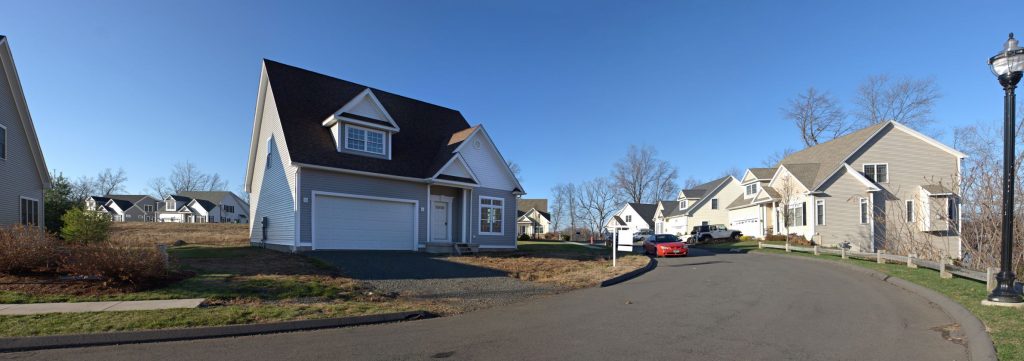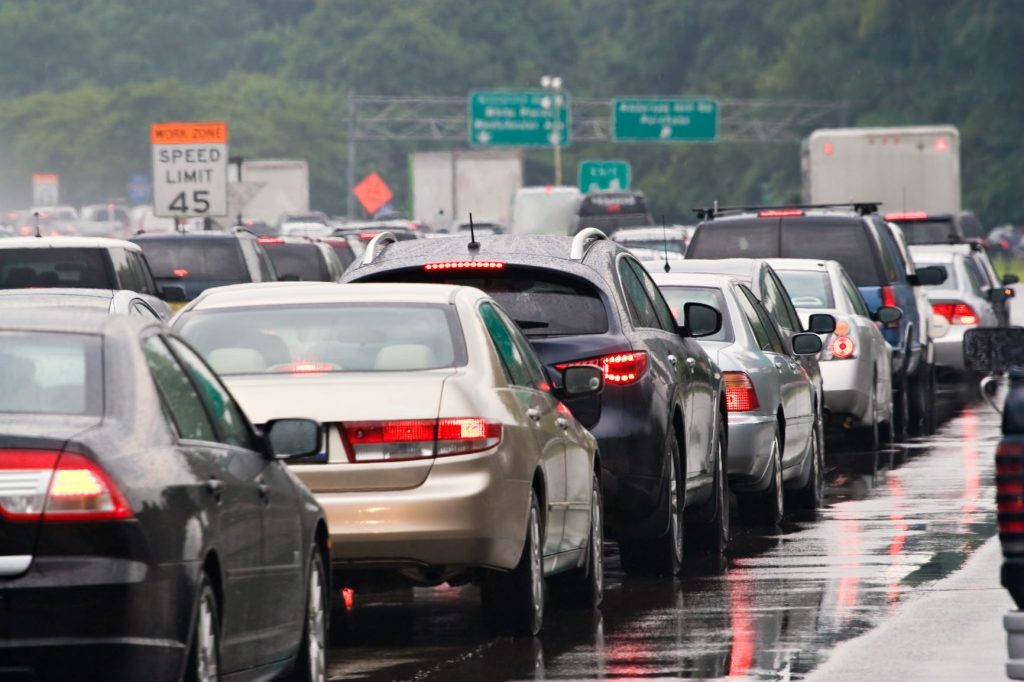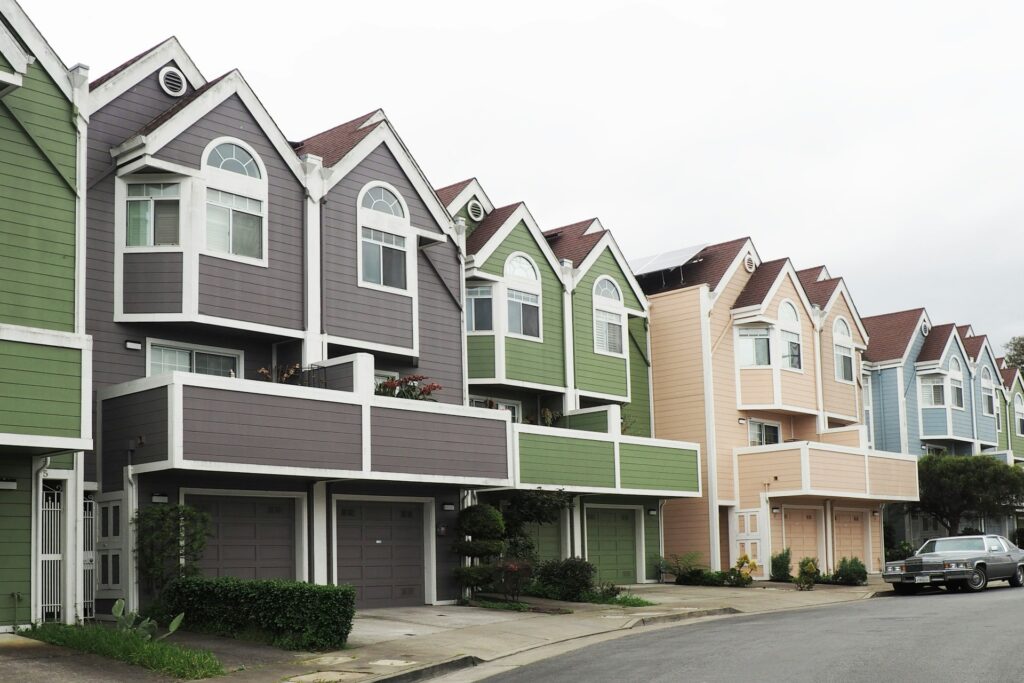
We are reader-supported. When you buy through links on our site, we may earn an affiliate commission.
Did you recently receive a promotion, get married, have kids or experience a similar life-altering change? Then big things are coming your way — one of which may include relocating. If you’re planning on moving, you’ll want to consider cost of living by state.
Regardless of your reasons for wanting to move, you’re probably wondering where you should relocate to. If you don’t have a specific area or city in mind, finding a new place to call home can be intimidating, to say the least. However, figuring out the cost of living by state can help you make the best decision for you and your finances.
Since prices of goods, services, houses and education can vary by region, it’s important to make sure your salary will adequately cover your expenses. Otherwise, you may have to uproot your family and move somewhere more affordable. By learning more about the cost of living, how it’s calculated and how it differs across the United States, you can make more informed decisions about your finances and build a better future.
- What Is the Cost of Living?
- What Does Cost of Living Include?
- Buying, Selling and Moving
- Stipends, Salaries and Subsidies
- How Has the Cost of Living Changed?
- Measuring Cost of Living Changes
- Comparing Costs
- Building a Better Future
- Cost of Living by State
What Is the Cost of Living?
Cost of living refers to the amount of money you need to live comfortably in any given location. This sum will cover basic, necessary expenses like housing, food and health care, and is relative to average wages. For instance, if costs are higher in a city like New York, salary levels may also be higher so people can afford to live there.
Often, people compare the cost of living in various cities to determine which ones are affordable or more expensive. These numbers will help them decide where to live based on their income and standard of living.
What Does Cost of Living Include?
The cost of living is complex and can include many different factors. However, most calculations account for housing, food, transportation, utilities, health care, taxes and a few miscellaneous expenses like child care, education and entertainment. Of course, your situation may include more or fewer factors, but the average cost of living is a good starting point for determining which destinations are worth your consideration.

Housing
Housing is the largest determinant of the cost of living by state, and prices can fluctuate immensely based on local real estate market trends. Additionally, some experts include utility costs, homeowners association fees and household maintenance in their calculations, while others only factor in rent or mortgage payments. Thus, housing costs can vary widely between cities and who you ask.
Calculating your individual housing costs will help you better understand which cities and accommodations are within your budget. Experts recommend that individuals spend no more than 30% of their monthly income on housing.
In many cases, that figure simply isn’t realistic. Someone earning $10 per hour would have to work more than 80 hours a week, every single week, to afford the average median rent for a one-bedroom apartment within the 30% guideline.
Part of the problem lies in the response to the 2008 crash. In the wake of the Great Recession, wealthy investors bought up many foreclosed single-family homes and rented them out, often at prices way higher than tenants would typically pay.
As a result, America has become a renter nation — and millions of Americans find themselves deprived of the traditional means of acquiring familial wealth. Soaring rent prices mean little money left over to save for a down payment. Renters must also contend with frequent monthly increases. Homeowners with a fixed-rate mortgage, however, enjoy the same payment over the life of their loan.
Consider your personal living situation. Do you live alone, or do you split costs with someone else? Will you rent or obtain a mortgage? Answering these and other similar questions will help you budget, plan and ultimately decide which housing option and destination are right for you. Considering cost of living by state can help you decide where you should set down your roots.
Food
Most calculations only include money you spend at the grocery store — not at restaurants and eateries. Thus, how close you are to grocers and which kinds of supermarkets you prefer will play into your cost of living.
Typically, smaller shops are more expensive because they have fewer opportunities to buy items in bulk. Plus, if they’re the only store in the area, they may not offer competitive prices, which can easily increase your grocery bill. You may run into food deserts in some areas, which are places that don’t have access to fresh, affordable, nutritious produce.
Moreover, groceries themselves are becoming more expensive. The Consumer Price Index climbed 4.2% in April of this year, which was a significant spike. As a result, major manufacturers such as General Mills and Procter & Gamble raised their prices.
Another factor influencing rising grocery costs is climate change. Wild weather patterns impact crops, sometimes causing substantial losses. Iowa, for example, saw not one but two “500-year” floods within a 15-year period — and that state raises a significant percentage of the nation’s corn.
While rural living costs less in many ways, here’s one area in which urban living reigns supreme. Groceries tend to cost less in big cities because more stores in fewer areas reduce fuel and transportation needs. While you’ll pay more to dine out, you can save if you cook at home
In this case, food costs can become a determining factor in your overall cost of living and decision to move to a certain location.

Transportation, Gas and Insurance
Likewise, transportation costs can vary from state to state depending on gas prices, insurance, whether you own a car, how often you use public transportation and how far you live from work. Therefore, it’s best to analyze your specific situation and include any related expenses in your individual cost of living evaluation.
Often, public transportation like buses, subways and trains offer cheaper, more sustainable commuting options. All you have to do is buy a pass and hop on. Meanwhile, car owners have to pay for fuel, insurance, maintenance, tires, licensing, registration and taxes. Plus, they’ll lose money over time due to depreciation.
Regardless, those who do drive cars experience varying costs for their gas and insurance. Several factors play a role in determining what you pay at the pump:
- Taxes: Some states place higher taxes on fuel to encourage conservation and raise needed revenue.
- Oil production: States that have significant oil reserves often pay less.
- The number of refineries: Likewise, some states have more refineries, meaning they save on costs for getting the fuel to the gas station and, eventually, your vehicle.
Likewise, states differ in the minimum insurance requirements for driving a car. Nearly all states require you to carry bodily injury and property liability coverage. Some also require personal injury and uninsured/underinsured motorist protection.
In most cases, cost of living estimates account for all of the above so you can plan accordingly.
Utilities
While some cost of living assessments include utilities under housing expenses, some do not. That’s why it’s important to consider how much utilities like electricity, gas, heat, hot water, air conditioning, cable, internet, water, garbage collection and pest control might cost on an annual basis in your dream destination.
Energy prices have increased 25% since 2020. In the U.S., average monthly utility costs total about $370. However, if the city or state you plan to move to has community solar programs or your dream house runs on renewables, this sum could be much lower. Likewise, if you’re looking to move someplace with frequent water shortages or a regulated electricity market, you may not be able to choose a provider. Consequently, your utility bills may fluctuate with supply and demand, even if your usage remains the same.
Health Care
Unless they’re getting married or starting a family, many adults assume health insurance costs about the same in every state. However, expenses and benefits can vary greatly depending on where you live, and some state’s Marketplace may even offer a subsidy or tax credit to lower your monthly payment or out-of-pocket costs.
Various factors can influence a state’s and city’s health care costs. Demographics, including poverty rates, number of prisoners and retirees, and the population’s age and health can all raise or lower the cost of your policy. Additionally, the area’s economic success will play a key role in determining how much you’ll pay.
Location also plays a factor in health care costs. Those in rural areas may need to travel considerable distances to access services. They might need to take off work, which can decrease their take-home pay if they are hourly and their employer doesn’t offer paid leave. A visit to a specialist might require an overnight trip and a costly stay at a hotel. Access to health care, then, is one of the biggest causes of high cost of living in these areas.
Taxes
Each year, Americans pay taxes on property, income and sales. How much they owe depends on where they live and will automatically factor into the cost of living. It may be tempting to move to one of the eight states that don’t have an income tax, like Texas and Florida, but property taxes and other fees may be higher there. Therefore, it’s crucial to consider how much you might pay in government taxes overall based on your income bracket.
Still, each state defines income differently. For instance, New Hampshire doesn’t consider regular income taxable. However, it does apply a flat tax rate to anything citizens earn from dividends and interest. Colorado, Michigan, North Carolina and six other states use the same approach. However, some may use the adjusted gross income to determine how much you pay. All other states use a progressive tax structure that taxes higher income levels at greater rates, regardless of the cost of living.
Miscellaneous Expenses
Aside from the necessary expenses above, there are a few other basic costs that many experts use to determine the cost of living in a given location. However, these can be difficult to estimate because child care, education, toiletries, entertainment, haircuts and other costs vary greatly — even within the same city.
Therefore, it’s important to factor these necessities into your budget based on how much you already pay to create a more accurate picture of how much life will cost in a different state. Remember to include entertainment, clothing, eating out and other related expenses as well.

What Causes a High Cost of Living?
Several factors influence how high the cost of living is in some places. What might affect some areas could look different in others. It’s important to research where you want to live and what factors might influence how affordable it is for you to relocate. Here are just some of the factors that might influence where your household ends up.
1. Population Density
The more people who want to live in a given place, the more the price of space there will rise. Things like housing will go to the highest bidder, which will drive up the cost of living. Think of rural towns versus areas like New York City or Los Angeles. Supply for housing and other limited items is much lower than the demand, meaning sellers, landlords, store owners and more can price things as they see fit to remain competitive with the area and match the costs.
The District of Columbia has the highest population density in the United States, meaning that the population per land is higher than all the other states. You can contrast this number to other states, like Alaska at 52. How dense the population is can often influence the cost of living in that area, but it may not always be true. Though Alaska is large, it has a higher cost of living than many states, for example.
2. Taxes
Simply put, it’s more expensive to live in places with higher taxes. It truly can vary from place to place, as some states don’t have local taxes, while others make up for their taxes with public programs that improve the standard of living for everyone. Even from city to city, municipalities can have different taxes for their residents.
Check out the taxes in any city or state, as they tend to give you a solid indication on the extra cost. Or, you can head to Oregon, Delaware, Montana, New Hampshire, or Alaska, where there is no sales tax at all. States like California and New York are known to have higher levels of income tax.
Likewise, some local municipalities levy an income tax. Many people who live outside of the Big Apple but work within the city limits have discovered this on April 15. Income taxes aren’t the only government-issued levies to factor into the overall cost of living. Sales tax and property taxes also play significant roles in how much you pay to live in a specific location.
3. Employment
Factors involving employment can also influence the cost of living in a certain area. Things such as employment rate and minimum wage can directly influence the cost of living in an area. As a result, the people making enough money to stay in a high-cost-of-living area will likely stay there. Others may move away to somewhere else with a lower cost of living.
It can sometimes be hard to tell which came first, but usually, minimum wages adjust for higher living costs. New York City’s minimum wage, for example, is $15 per hour. In contrast, Georgia and Wyoming drop to nearly 10 dollars below that at $5.15 per hour. This makes sense, as it costs significantly more to live in NYC than it does to live in rural areas.
The influence of the unemployment rate on the overall cost of living might not be quite as obvious. However, the correlation of the cost of living with the rate of employment is actually decently solid. Usually, the lower the unemployment rate in a city, the more expensive it is to live in.
This might feel a bit backward, as a higher unemployment rate would mean less competition for your professional life and housing. However, a lower unemployment rate indicates a stimulated economy, job security, and consistency. All these things that are important to an even and reasonable cost of living.
Job availability can also be a massive indicator of cost of living in the area, since it can potentially influence the overall salary and income of a household. Still, having more job availability is ultimately a good thing even if it increases the cost of living. It offers more opportunities for growth and more opportunities for sustainable living in one place.
Areas that are more remote or offer challenges when it comes to the industries available often have a hard time retaining new residents due to the lack of job security. On the other hand, places with niche job markets can be great if you have a specific skill set.
4. Child Care and Health Care
Health care and child care are two major factors people have to keep in mind when determining where to live. They’re some of the biggest components of the cost of living in a certain place. However, they can also directly influence it and make it completely unaffordable for some households. You may even choose where to live based on these factors.
In larger cities as well as more expensive areas, child care can be more expensive. Additionally, sending your kids to private schools can add to the cost of education.
Generally, education can be a difficult beast because it can really vary from state to state. Since property taxes fund education, specific living areas can influence the public school system. People may choose to reside in a higher-cost-of-living area if the public schools are better funded than other options. Better-funded schools may lead to students who perform better on exams and retain more material. In addition, it’s more likely teachers are paid well and have a lower student ratio.
Health care is another aspect to consider. Higher health care costs are typically associated with “better” treatments. While many appointments may cost the same amount, you have to consider how you’ll get there. If you live in a rural area, finding a specialized doctor may lead to longer distances traveled. Conversely, in a city saturated with health care options, you have the burden of finding one that fits your insurance. You also risk information overload as you try to make the right choices for your health.
Rural folks may also have fewer choices when it comes to insurance. Marketplace coverage varies widely from location to location, and some remoter regions may offer only one or two policy choices. If individuals don’t like their options, they don’t have much choice. Then, they’ll have to risk going without, facing possible bankruptcy if they get sick or injured.
5. Housing Costs
People aren’t supposed to spend the majority of their take-home pay on rent or a mortgage. Therefore, it might be hard for people with lower incomes to find an affordable place in an expensive housing market. Therefore, the cost of housing can drive up the cost of living. Alternatively, it can drive it down and give you a great deal. Even if you don’t own property, the cost of housing can have an impact on rent prices. Renters must also contend with frequent monthly increases.
While this is often a geographical point, the cost of housing itself can often vary from neighborhood to neighborhood. You can find housing in your city, even if the city on average can be a bit expensive. It’s all about finding the right places for your needs.
Following the COVID-19 pandemic, housing costs drastically changed. Several things could have driven the market to change, like people working remotely and moving to lower-cost-of-living areas while working the same job. They may have moved from a fast-paced city with a high cost of living.
The price of building materials also plays a role. The pandemic meant many people stuck at home decided to tackle improvement projects they previously delayed. The dynamic drove up the price of lumber, meaning new construction costs significantly more now than in previous years.
When new construction costs more, it creates more expensive comparable properties in the same neighborhood. As a result, the value of the region typically increases. Sellers of older homes can likewise demand higher sale prices.
6. Transportation
You may notice that, in many cities, the closer proximity to downtown areas, the more expensive the rent or mortgage. You might save on housing costs if you live farther away from the city’s center. However, you’ll likely pay more for transportation. Whether you rely on public transportation or watch gasoline prices, you should know they can influence the cost of living in an area.
Large metropolitan areas with reliable, affordable public transportation can cut your need for a car and make your life easier. Cities that make you rely on a car and pay to park it, on the other hand? Not so much. Alternatively, places where you can rely on your car and have the space to park it can also be money-saving. And, of course, don’t forget the price of gas, which can fluctuate but tends to go up towards the coasts.
Those who live in cities with well-maintained public transportation systems may find they don’t need a car at all. Less than half of the households in New York City own a vehicle, for example, while going without wheels would be unthinkable in many suburban areas. It’s simple enough to walk or catch a bus for most errands and take an Uber or taxi for special occasions when you live in the city.
Those who live in rural areas may gravitate to remote regions for the relatively low cost of land per acre. However, such folks often face lengthy drives into town to get necessities such as groceries. If you prefer to be farther from the city center in a town without excellent public transportation, you may notice that the location is a bit inconvenient — leaving you to grapple with gas prices as they fluctuate.
7. Groceries, Utilities and Other Household Expenses
Household expenses will often eat up a person’s budget before they know it. The price of groceries continues to go up, and eating at restaurants or picking up take-out may also be reaching unaffordable levels for many people. Almost anything could cause grocery prices to rise — any mishap in the supply chain could wreak havoc on the price of produce, thereby driving the cost of living sky-high.
Where you live also plays a significant role in utility costs. Those who dwell in states like Arizona and Florida might enjoy low winter bills but pay more in the summer for air conditioning. Folks in the Upper Midwest might spend a small fortune in the winter to keep cozy.
You must also plan for any miscellaneous household expenses that might fluctuate and influence whether a location is affordable to live in. For example, the price of beauty services might vary drastically based on the type of salon you frequent. Before committing to living somewhere, you should research the other services you enjoy to see how they’ll fit into your budget in a new place.
Buying, Selling and Moving
From grocery bills to gas prices, the cost of living in a city affects your day-to-day life and long-term financial health. Your current salary likely covers your expenses right now, but can you enjoy the same standard of living elsewhere? If you aren’t sure, consider purchasing a cheaper house than you can afford so you have a bit of wiggle room after the move. Then, you can reorganize your budget and lower your standard of living if need be.
Likewise, if inflation, a sudden job loss or low wages make it impossible to save money or afford your current lifestyle, you might move to a state with a lower cost of living. There, you may be able to afford more with your small salary or take a more conservative approach by adjusting your spending to live well within your means. Then, you can focus on building your savings so you can move elsewhere.
Stipends, Salaries and Subsidies
Have you been offered a promotion that involves moving to a new city or state? If so, your employer may also provide you with a relocation package to help cover costs associated with the move. While some packages only include a single aspect like a moving truck, others will offer a comprehensive benefits bundle to pay for everything from child care assistance to a down payment on a new house.
Your employer may also give you a raise if you agree to transfer to a new location. However, it is well within your rights to negotiate better terms if you determine a higher salary still won’t compensate for your increased cost of living. Talk to your boss about education reimbursements, better health coverage, more paid time off or a reoccurring stipend if they don’t agree to a higher salary.
Sometimes, relocation won’t require you to move. Instead, you’ll work in a different office in the same city. In this case, your transportation costs may increase, but other expenses will remain the same. If your employer isn’t offering a stipend or salary increase to compensate you, ask for a bonus or transportation subsidy instead. These are often easier to obtain as they’re less costly for companies to dole out.
How Has the Cost of Living Changed?
Many people feel like their dollars don’t go as far as they used to and, in a way, they’re right. The price for daily goods has increased considerably since 1998 and, while household income has been steadily growing, it has failed to keep up with inflation. In fact, it is 5% below where it should be. Thus, the dollar has much less buying power than it did 20 years ago.
As a result, nearly half of Americans believe the ever-increasing cost of living to be the biggest threat to their financial security. The increased price of health care is a close second. Thus, many young people are paying more in rent and waiting longer to buy homes than previous generations. They’re also paying more for a four-year college degree and racking up higher student-loan debt. As prices continue to rise, you’ll likely see more people moving to areas with a lower cost of living and working multiple jobs to stay afloat.
Measuring Cost of Living Changes
The U.S. uses the Consumer Price Index to measure fluctuations in the cost of living. Each month, the Bureau of Labor Statistics reports the CPI. However, due to new product inventions, the CPI inevitably lags a few years behind. Thus, most economists rely on something called a core inflation index, which excludes volatile economic variables. This process allows them to create a more accurate representation of underlying price trends that affect the cost of living.

Comparing Costs
To simplify things, use an index to compare the overall cost of living between geographical areas. While there are various types of indexes, most set a base cost of living, often represented by 100. The base can be the cost of living in one region or a single city. Then, you can measure other areas against the base number accordingly. For instance, if you live in Chicago, use it as a base 100. Cities that are 10% more expensive to live in would be 110, cities 10% less expensive would be 90, and so on.
You might also use various online cost of living calculators to determine whether or not you can afford to live in a certain state based on your salary. Use multiple sites to get the most accurate comparison and make the most informed decision.
Building a Better Future
While the cost of living may be rising, choosing the right place to live can help you budget and save accordingly. By making the right decisions today and living within your means, you can build a better tomorrow for yourself and your kids.
Cost of Living by State
Alabama
Illinois
Kansas
Michigan
Missouri
Nevada
New Mexico
North Dakota
Oregon
South Carolina
Texas
Virginia
Wisconsin
Indiana
Maryland
Minnesota
Montana
New Hampshire
Ohio
South Dakota
Utah
Washington
Wyoming
Arizona
Idaho
Iowa
Louisiana
Massachusetts
Mississippi
Nebraska
New Jersey
Oklahoma
Rhode Island
Tennessee
Vermont
West Virginia










